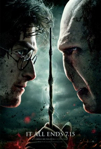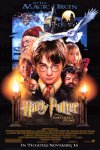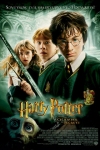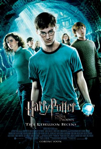Analysis: Harry Potter and the Big Pile of Money
July 21, 2011
With Harry Potter and the Deathly Hallows Part 2 off to a record-breaking start, the biggest-earning franchise at the worldwide box office is nearing its end. A few records are still to fall (notably, it will overtake Star Wars in a day or two to become the biggest domestic franchise), but we thought now would be good time to look back at how Harry Potter has shaped the movie industry, and the financial records it has broken along the way. For each film, we look at both the box office receipts and domestic spending on DVD, Blu-ray and video rentals. Warning: some readers may find the large numbers presented disturbing.
Production Budget: $125,000,000
The release of Harry Potter and the Sorcerer's Stone back in November, 2001 set the stage, of course. It posted the biggest opening weekend of all time, beating a record that had been held for over four years by Lost World: Jurassic Park. With Lord of the Rings: The Fellowship of the Ring following just one month later, fantasy movies reemerged as a box office force for the first time in over a decade. On the home market, its timing couldn't have been better, as the DVD market was just maturing, and it became one of the first titles to crack 10 million units sold domestically. (Our figures above don't reflect VHS sales, which added another sizable chunk to its revenue.)
Sorcerer's Stone also represented something of an end to an era, though, with its special effects mostly reliant on prosthetics and models. Lord of the Rings was more of a hybrid, and it showed that CGI could be used effectively for character animation as well as more static elements.
Production Budget: $100,000,000
Potter followed suit in Chamber of Secrets, and CGI has remained central to its production ever since. The rest of the industry has, of course, adopted the same practices. If there was one moment that the future of the franchise was in doubt, it was probably the Friday morning that this film was released. A significant drop in performance could have cast doubt over the wisdom of investing another billion dollars or so to complete the series. Fortunately for fans, Chamber of Secrets opened strongly, with $88.4 million -- not as much as Sorcerer's Stone, but not significantly down either. Another $878 million at the global box office laid any fears of a abrupt end to the franchise to rest.
Production Budget: $130,000,000
In spite of being another huge financial success, Chamber of Secrets started a trend of declining returns for the franchise, which continued with Prisoner of Azkaban. That film had the biggest opening weekend for the franchise so far, but was also the worst performer at the box office, just missing $250 million domestically and falling short of $800 million worldwide (still enviable numbers, of course). Azkaban was the first film in the franchise released in the Summer, which caused considerable debate at the time. The consensus was that opening on June 4, right after Memorial Day weekend, was probably not ideal. The advantage of a Summer opening, however, was that Prisoner of Azkaban was released on DVD right before Christmas, which helped maintain strong video sales. All of the first three films in the franchise sold over 12 million DVD units and Azkaban took total domestic video sales past $800 million.
Production Budget: $150,000,000
Goblet of Fire saw the franchise return to its November opening roots, and the change seemed to work at the box office. Its opening weekend was $102.7 million, another franchise record (one that would stand until Deathly Hallows 2), and it finished with $290 million at the domestic box office and $897 million worldwide, the best performances since Sorcerer's Stone. At $150 million, Goblet of Fire was also the most expensive film in the franchise so far, although that number would be dwarfed by later outings. Total domestic box office for the franchise had passed $1 billion, and another 11.7 million in DVD sales took the franchise past $1 billion in domestic video spending.
Production Budget: $150,000,000
Order of the Phoenix continued the positive trends from Goblet of Fire at the box office. A slightly later Summer start, on July 11, seemed to work well, as the film had more limited competition in the second half of the holidays. Its final gross of $292 million domestic and $940 million worldwide were the best since Sorcerer's Stone, although both figures were helped by ticket price inflation -- in terms of tickets sold, both numbers were a little behind Goblet of Fire. Order of the Phoenix was the first film in the franchise to be released simultaneously on DVD and Blu-ray, and the first installment to achieve significant Blu-ray sales. The combined effects of Blu-ray, a strong performance as a rental title, and being released at the peak of the home video market made Order of the Phoenix very marginally the top grossing film on digital video in the franchise (although Sorcerer's Stone tops it when factoring in VHS sales).
Production Budget: $250,000,000
Half-Blood Prince marked the first film in the franchise with a truly huge budget: at $250 million it remains one of the most expensive films of all time. The added production complexity meant that there was a two year delay before its release: the longest gap between films in the franchise. But again a mid-July release date helped the film perform strongly. Its $77.8 million opening weekend was on par with Order of the Phoenix -- both films had lower headline figure thanks to Wednesday openings -- and it became the second film to cross $300 million domestically. $934 million worldwide was marginally down from Order of the Phoenix, but more significantly Half-Blood Prince was the first film in the franchise to really suffer from the downturn in video sales. 10.25 million units in total is nothing to be sniffed at, and it has topped 1.5 million in Blu-ray sales, but total domestic consumer spending was well under $200 million, which was a big shift for a franchise that formerly pushed $300 million with each release.
Production Budget: $125,000,000
Deathly Hallows Part 1 was the last film in the franchise to be released in November, and set a new high opening weekend mark with $125 million. Its final domestic box office was a slightly disappointing $295 million, which is the lowest for the franchise in inflation-adjusted terms. Total domestic video sales amount to about 8 million units so far, also the lowest for the franchise, but 2.8 million of those have come from Blu-ray, and additional sales around the release of Deathly Hallows 2 will boost those numbers further.
Totaling everything up, the franchise has earned just shy of $7 billion at the box office worldwide (and will surpass that milestone soon), roughly $2 billion more than James Bond, and in 25 fewer films. Domestically, it will pass Star Wars at the box office within a day or two, and will finish well over $2.3 billion. (Most likely, Star Wars will regain the domestic crown over the next few years with its 3D releases.) Total consumer spending on video stands at about $1.7 billion domestically, and is over $3.5 billion worldwide, which is also an all-time record. That adds up to well over $10 billion in consumer spending on the films in total, not to mention TV rights, licensing and other ancillary income that push the value of the franchise to something around $15 billion.
That's a record that will take some beating. In fact, in terms of global appeal, it's really unprecedented in the history of the industry. While the records will probably fall one day, J.K. Rowling's creation has undoubtedly changed the face of the film industry almost as much as it revolutionized book publishing.
Bruce Nash bruce.nash@the-numbers.com

Harry Potter and the Sorcerer's Stone

Release Date: November 16, 2001
Opening Weekend: $90,294,621
Domestic Box Office: $317,575,550
Worldwide Box Office: $974,755,371
Domestic DVD Units: 12,500,000
Total Domestic Video Consumer Spending: $290,600,000
Harry Potter and the Chamber of Secrets

Release Date: November 15, 2002
Opening Weekend: $88,357,488
Domestic Box Office: $261,987,880
Worldwide Box Office: $878,987,880
Domestic DVD Units: 12,300,000
Total Domestic Video Consumer Spending: $258,900,000
Harry Potter and the Prisoner of Azkaban

Release Date: June 4, 2004
Opening Weekend: $93,687,367
Domestic Box Office: $249,538,952
Worldwide Box Office: $796,688,549
Domestic DVD Units: 12,100,000
Total Domestic Video Consumer Spending: $274,000,000
Harry Potter and the Goblet of Fire

Release Date: November 18, 2005
Opening Weekend: $102,685,961
Domestic Box Office: $290,013,036
Worldwide Box Office: $896,911,078
Domestic DVD Units: 11,700,000
Total Domestic Video Consumer Spending: $253,200,000
Harry Potter and the Order of the Phoenix

Release Date: July 11, 2007
Opening Weekend: $77,108,414
Domestic Box Office: $292,004,738
Worldwide Box Office: $939,885,929
Domestic DVD Units: 11,300,000
Domestic Blu-ray Units: 400,000
Total Domestic Video Consumer Spending: $291,300,000
Harry Potter and the Half-Blood Prince

Release Date: July 15, 2009
Opening Weekend: $77,835,727
Domestic Box Office: $301,959,197
Worldwide Box Office: $934,416,487
Domestic DVD Units: 8,750,000
Domestic Blu-ray Units: 1,500,000
Total Domestic Video Consumer Spending: $174,100,000
Harry Potter and the Deathly Hallows: Part I

Release Date: July 15, 2009
Opening Weekend: $125,017,372
Domestic Box Office: $295,001,070
Worldwide Box Office: $955,417,476
Domestic DVD Units: 5,150,000
Domestic Blu-ray Units: 2,800,000
Total Domestic Video Consumer Spending: $162,000,000
Filed under: Harry Potter and the Sorcerer’s Stone, Harry Potter and the Half-Blood Prince, Harry Potter and the Order of the Phoenix, Harry Potter and the Goblet of Fire, Harry Potter and the Chamber of Secrets, Harry Potter and the Prisoner of Azkaban, Harry Potter and the Deathly Hallows: Part II, Harry Potter and the Deathly Hallows: Part I


